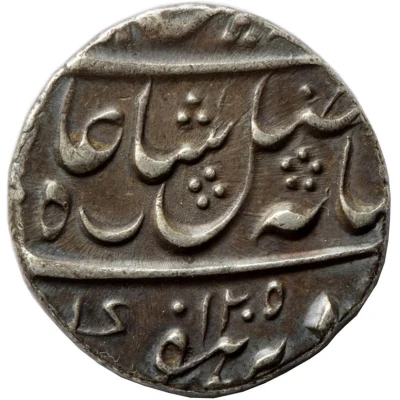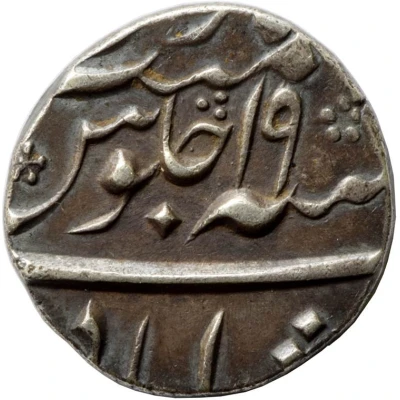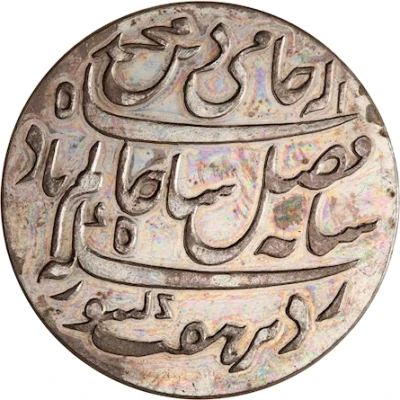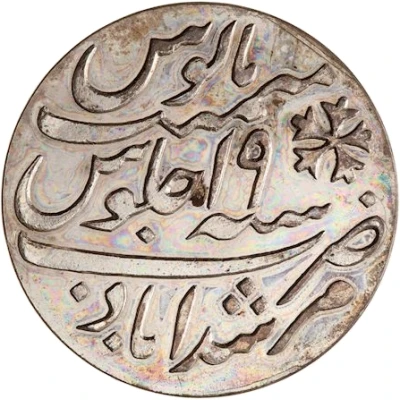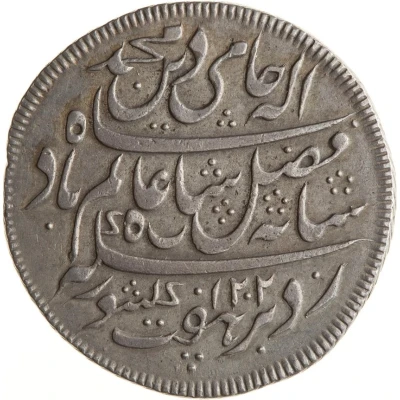
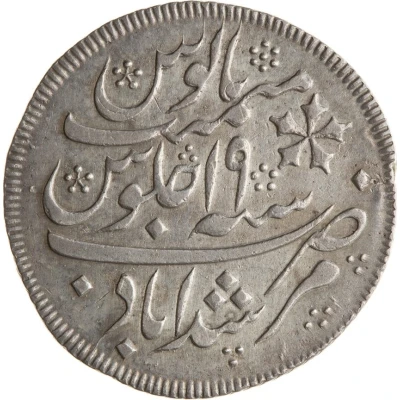

© Museum Victoria
1 Rupee - Shah Alam II
1202 (1792) year| Silver | 11.64 g | 30 mm |
| Issuer | Bengal Presidency (British India) |
|---|---|
| Type | Non-circulating coin |
| Year | 1202 (1792) |
| Calendar | Islamic (Hijri) |
| Value | 1 Rupee |
| Currency | Rupee (1765-1835) |
| Composition | Silver |
| Weight | 11.64 g |
| Diameter | 30 mm |
| Shape | Round |
| Demonetized | Yes |
| Updated | 2024-10-05 |
| Numista | N#72880 |
|---|---|
| Rarity index | 82% |
Reverse
Legend in Persian: Zarb Murshidabad sanat 19 julus maimanat manus
Lettering: ١٩
Translation: Struck at Murshidabad in the 19th year of his reign of tranquil prosperity
Edge
Oblique milled (grained right) /////
Comment
- In 1790 new presses based on a screw thread were introduced replacing the old hand hammered method of production. This issue is from the second rupee production after the new technology arrived after production difficulties related to dies and blank manufacture were overcome. The new presses permitted the entire design of the coin to appear, earlier rupees showed only varied, roughly central, portions of the die. The dates on this coin, 1202 19 san, both were frozen and do not relate to the date that the coin was produced. This was done as local money changers used to make a charge, called batta, on old coins when new dates appeared. The coins are referred to as perpetual 19 san sicca. Use of the hijri date, 1202, was discontinued after this coin issue but the 19 san remained until 1834. The use of the mint name Murshidabad was also frozen on all EIC mints in the Bengal Presidency at this time.- Weight varies 11.58 - 11.64 grams
- Diameter varies 29.5 - 30 mm
- Even though mint name coins is Murshidabad, this coin was minted in Calcutta from 1790 to 1792
- Broad dentilated Rim
- Previous KM #774
Interesting fact
One interesting fact about the 1 Rupee - Shah Alam II 1202 (1792) coin from Bengal Presidency (British India) is that it features a unique blend of Islamic and European design elements. The obverse side of the coin bears the inscription "Shah Alam II" in Persian script, while the reverse side features a crowned lion, a common motif in European heraldry, holding a sword and a shield with the British coat of arms. This blending of styles reflects the cultural exchange and influence that occurred during the British colonial period in India.
